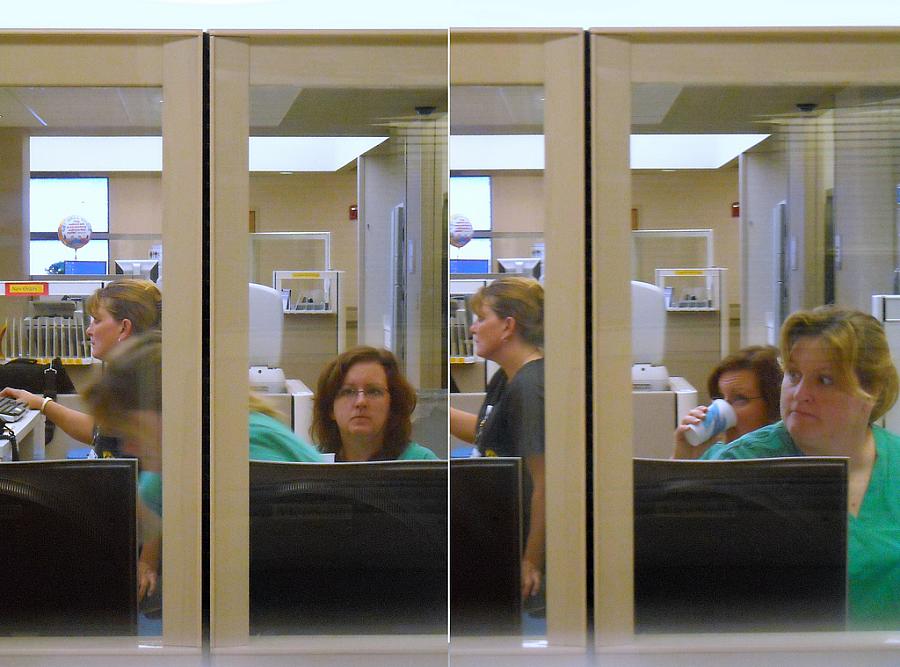Bed Count: Hospital closures have little effect on patient deaths

If 100 people are saved every year by a hospital’s emergency room, does it stand to reason that 100 will die if that ER closes?
What is a reasonable number? 50? 25?
Consider this: It's more likely that five people might die every year because of that closure.
That number comes from a recent study in Health Affairs about California emergency department closures. The findings run counter to the prevailing narrative in so much health journalism that hospitals are the primary solution for a community’s health care problems.
The authors in Health Affairs did a nice job framing their study and examining as much evidence as they could gather in their search for patterns linking mortality – up or down – to emergency room closures. The study is particularly relevant, since ER visits are up, and yet the number of emergency rooms is shrinking.
They cite surveys over the years that show how between 1996 and 2009 the number of annual ER visits grew from 90.3 million visits to 136.1 million – note that 10 visits could be the same person visiting 10 times. And the number of emergency departments shrank from 4,884 to 4,594 during the same period. That’s a 51 percent growth in visits and a 6 percent reduction in emergency departments. Studies have shown over this period that crowding problems have grown as a result, wait times have lengthened, and ambulances have had to travel longer distances. A 2007 report from the Institute of Medicine wrote:
The emergency system itself appears to be crumbling in major cities. In Los Angeles, for example, 8 hospital EDs have closed since 2003, bringing the total closed countywide to over 60 in the last decade. These trends are symptomatic of a growing national crisis in emergency care. This crisis is multifaceted and impacts every aspect of emergency care—from pre-hospital EMS to hospital-based emergency and trauma care.
That is the backdrop for the examination of the effects of ER closures in California. And there have been a lot of them.
The study examined 16,246,892 admissions to California hospitals from 1999 to 2010. Over that time, 48 emergency departments closed in California, including 26 cases where the entire hospital closed.
And after reading the IOM report and reading the top of the Health Affairs study, I was expecting to see a huge effect.
But the researchers found that the effect was very much dependent on the type of population being served (or not served).
Let’s just start with the overall population studied. What happened to those 16.2 million hospital admissions?
Well, 12.1 million of them were not in an area that had been affected by an emergency department closure. Only 4.1 million of them were.
Now, how many of the people admitted to the hospital died because an emergency room had closed and they had to wait too long to be treated or suffered some other complication?
The study doesn’t provide an estimate of the number, but it does provide an estimate of the odds that a person during this period died because of a hospital closure. In short, a tiny fraction of them may have. The study found that it was 5 percent more likely that someone died in California because of an emergency room closure than had the emergency room remained open. They found this effect could have been as little as 2 percent or as much as 7 percent. (This is what’s known as the confidence interval.)
The study also provides one possible answer to the question of whether hospital closures hurt low-income communities. It found that, among the uninsured overall, the odds of dying were lower. I asked one of the study’s co-authors, a former colleague of mine, Tanja Srebotnjak, a senior fellow at the Berlin-based Ecologic Institute. She told me:
Our study was not able to disentangle the complex set of factors affecting inpatient mortality. One theory could be that the ERs that close are under-performing ERs, so that diverting these patients to other ERs might actually be beneficial to their health outcomes, thus counteracting the increase in mortality that might be due to more overcrowding and longer travel times.
She stressed that this was just a theory and that the study did not examine metrics on quality of care at each ER and hospital. For the theory to hold, it would mean that the hospitals and emergency departments that closed had lower quality care on a range of measures. As Srebotnjak explained:
ERs and hospitals there could be less well equipped, attract fewer top doctors, have higher share of unreimbursed care, etc. These disadvantaged regions also often have higher shares of blacks, Hispanics/Latinos, and uninsured, such that their diversion to other, possibly better ERs could lead to better health outcomes.
There are limitations to any study, and the authors acknowledge a range of them in this paper, including the fact that it “did not capture patients who died before they could generate a hospital admission.” California is also a state with denser populations and generally shorter travel times to reach a hospital, even after a closure. A 2007 study in the Emergency Medicine Journal, for example, found that for each additional 6 miles of distance an ambulance had to travel, there was a 1 percent increase in mortality.
The wide scope of the Health Affairs analysis and the ultimately small effect found should give reporters pause before declaring that the closure of a hospital is going to lead to more dead and injured people.
Photo by Todd Ehlers via Flickr.
